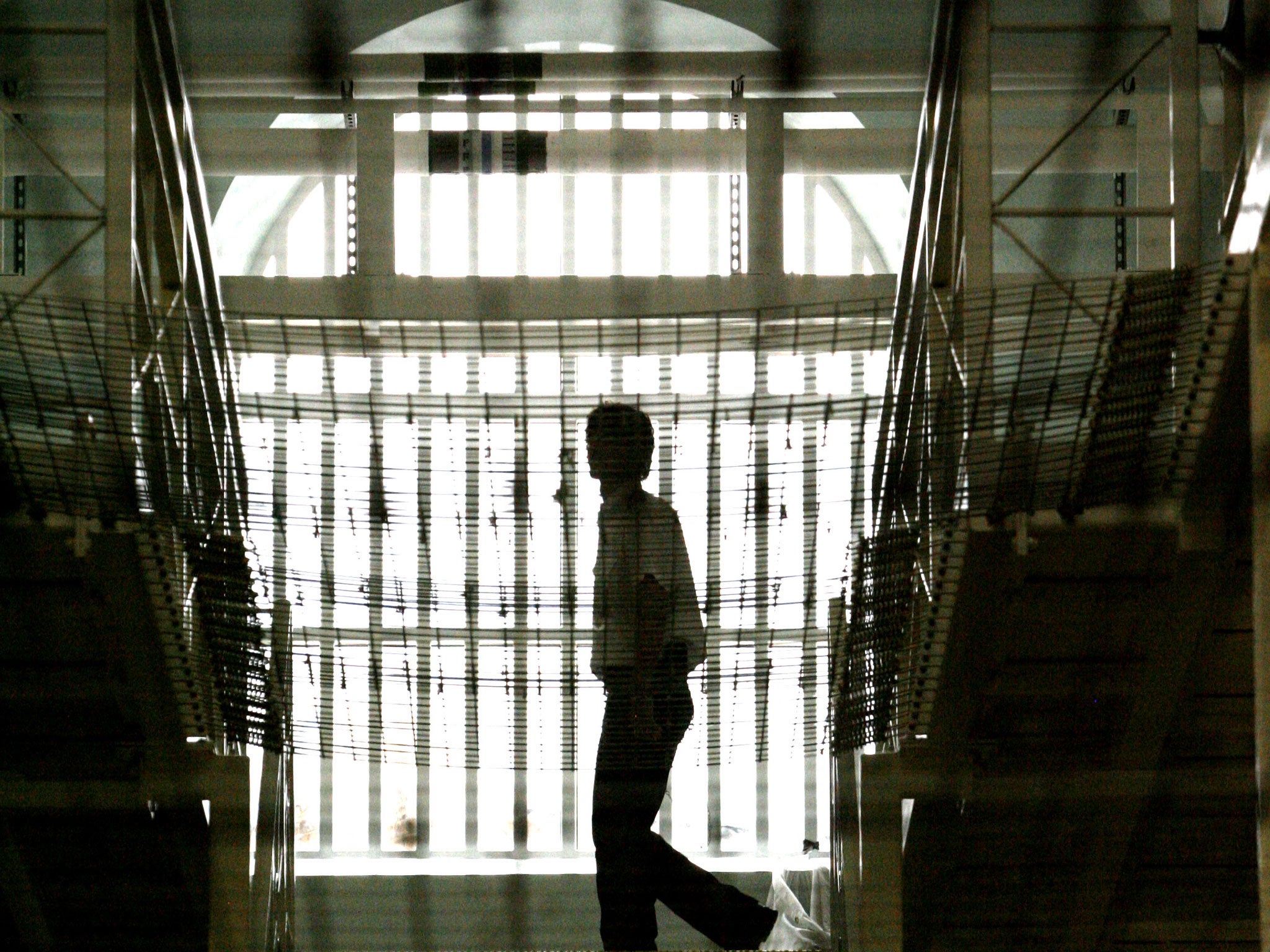Prisoners still locked in cells for 23 hours a day despite lifting of Covid restrictions
‘Post-Covid torpor’ in jails risks pushing inmates into ‘long lives of criminality’, watchdog warns

Prisoners are still being locked in their cells for more than 23 hours a day despite the lifting of Covid restrictions, as a result of what the prisons’ watchdog has branded a “post-Covid torpor” in jails.
In a damning annual report, the Chief Inspector of Prisons sounds the alarm on the lengthy periods inmates are still being locked up despite the lifting of Covid rules, warning that there would be a “price to pay” for the lack of “purposeful” activity.
Charlie Taylor said it was “disheartening” to visit prisons with large proportions of young men where grounds and workshops often remained “mostly empty” with “just a handful of prisoners receiving any face-to-face teaching”.
“The failure to fill the gaps in the skills and education of these prisoners and the low expectations of their abilities and potential meant they were learning to survive in prison rather than being taught how to succeed when they were released,” he said.
He expressed concern at the government’s plan to build 20,000 new prison places given the current state of the system, warning of a “danger” that it will mean “even fewer” activity places to enable rehabilitation.
During the national lockdown in 2020, prison rules changed so that most adult prisoners were locked in their cells for an average of 22.5 hours a day, with the majority prevented from leaving their wings for work, education or other activities.
The inspectorate report found that while in some prisons there had been attempts to get things “opened up” again and to get prisoners back into work and education, this was, in many cases, not happening.
“There’s a sort of post-Covid torpor that we’re seeing in some jails, where people seem to be stuck in the idea that lockdowns are reasonably convenient, that keeping prisoners locked up avoids some of the difficulties they’ve had in the past,” Mr Taylor said at a media briefing on Wednesday.
He added: “Unless these men are given the support that they need, there is the potential that they will lead long lives of criminality – creating victims, disrupting their communities and placing a huge burden on the state.”
The report also warns of a “flood” in prison staff quitting their jobs, with people “frustrated by what the job had become” and finding other employment opportunities after the lockdowns of 2020 and 2021.
This has led to inexperienced officers supervising new recruits and means that in jails with long-serving populations, prisoners know “much more about prison life than staff”, according to inspectors.
The report also details poor physical conditions in prisons, with some segregation units left with no in-cell electricity and many of the showers broken.
It highlights concern about increased levels of violence and self-harm in women’s prisons, as well as the fact that many women are leaving jail without a safe and sustainable place to live.
Earlier this year, the safety of women prisoners was judged by the watchdog to be at its lowest point in a decade, prompting calls for a “turning point” in the government’s approach.
Mr Taylor also raised alarm about what happens when women leave prison, citing one case of a woman who said she was released and got a taxi straight back to the red light district.
Responding to the report, Peter Dawson, director of the Prison Reform Trust, said the main conclusion was that “penal policy requires a political reset”.
“This government boasts about its intention to have 20,000 more people in prison by 2026, but the report could not be clearer about the likely outcome if the system continues as it is,” he added.
“Lock ‘em up and throw away the key might be a good policy for an election campaign, but this report shows that it actually makes us all less safe. Perhaps uniquely amongst public services, we can get a better result by shrinking rather than growing our use of prison.
“There has never been a better time to seize that opportunity, but it will take a change in the political approach to make it possible.”
Andrea Coomber, chief executive of the Howard League for Penal Reform, said the findings that inmates were being locked in their cells for hours on end with nothing to do spoke to the “utter pointlessness” of time spent behind bars.
“As the Conservative Party prepares to choose its next leader and prime minister, here is compelling evidence of the need for change. When prisons fail to reduce crime, turn lives around and prepare people for safe release, what is the point in building more of them?”
A government spokesperson said: “During the unprecedented pandemic, our hard-working frontline staff kept jails running safely, as the chief inspector acknowledges in this report.
“We are making progress to rehabilitate prisoners: 50 per cent more offenders are finding work shortly after release than a year ago – reducing reoffending and making our streets safer.
“With our Prisons Strategy White Paper, we will get more offenders skilled up, off drugs and into employment to cut crime and protect the public.”
Subscribe to Independent Premium to bookmark this article
Want to bookmark your favourite articles and stories to read or reference later? Start your Independent Premium subscription today.

Join our commenting forum
Join thought-provoking conversations, follow other Independent readers and see their replies